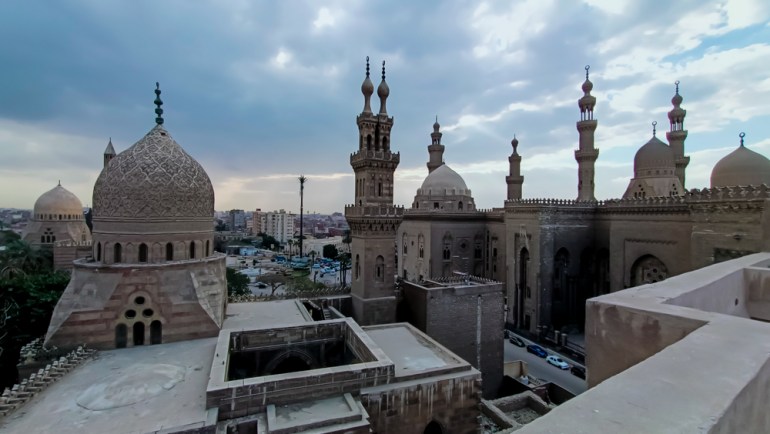A majestic ancient house, in the center of Cairo, bears from history features and murals, some of which date back to the Ottoman era, and lists traditional architectural traditions, while its roof overlooks a wonderful view of most of the city's historical landmarks.
It is a house known as "Ali Labib", which is considered an Islamic monument, known for its unique archaeological Ottoman style. It is located in one of the lanes of "Salah al-Din Square" (the Citadel currently) in the "Al-Khalifa" neighborhood, adjacent to ancient mosques that adorn historic Cairo.
According to the website of the Egyptian Ministry of Tourism and Antiquities, "Sherif Omar Al-Malatili and his brother Ibrahim ordered the construction of this house in the late 12th century AH (18th century AD) in the Ottoman era, but it was later known as Ali Labib."
The house received "wide fame through the use of some foreign and Egyptian art men of it as a studio, and that is why it was called the Artists' House."
According to the same source, the house is "one of the best surviving buildings that display local architecture, and one of the types of housing in the Ottoman era that followed the traditions of Mamluk architecture."
The rooms of the house also display "the collectibles of pioneers such as the famous architect Ramses Wissa Wassef (1911 - 1974), the international architect Hassan Fathi (1900 - 1989), and the upper halls are decorated with paintings depicting buildings and gardens in Cairo, and the roof of the house overlooks a wonderful view of most of Cairo's historical landmarks. , according to the ministry.
Historic Cairo was inscribed on the World Heritage List in 1979, as it is considered one of the most important and largest heritage cities in the world.
The ancient house of "Ali Labib" was renovated, and the Egyptian Ministry of Culture repurposed it and turned it into a "Museum and House of Egyptian Architecture", by a decision in 2010, whose objectives were to "highlight the culture of Egyptian architecture through its historical eras, up to its contemporary time."
Indoor tour
"This house includes two courtyards, the first is a small southeast, and the second is a large northwest, which is the main courtyard, and the architectural units of the house are distributed around the two courtyards."
The ground floor of the first small courtyard has two rooms, the most important of which is the room that overlooks the courtyard.
As for the first floor, it contains the summer seat, the dormitory attached to it, and rooms for the people of the house.
On the northwest side of the small courtyard, a door opening leads to the second, large, main courtyard, around which the house’s elements, which consist of two floors, are wrapped around it. A bathroom and a large upper hall for women (Al Haramlek).
The house of "Ali Labib" in the center of Cairo bears from history features and mural scenes, some of which date back to the Ottoman era (Anatolia).
And the Egyptian Ministry of Tourism considers that, "At a quick overview of the house, it seems that its first owner was fond of art, as we see on the walls of the upper halls folk drawings representing buildings and parks, and it is one of the early examples of folk art that became popular in many Cairo homes in the 18th and 19th centuries." .
The masterpieces of stone carving are evident in the house on the facades overlooking the courtyard, in addition to the ceramic tiles above the entrance to the seat, the wooden elements of mashrabiyas and beaded windows, and the stucco decorations interlaced with colored glass.
In the rooms of the house, which was known in its Ottoman style, influenced by Mamluk architecture, a wonderful mural scene attracts the eye. It was written on its identification plaque: “From the historical origin of the house is the view of the Gulf of the Golden Horn in Turkey, overlooking at the forefront the Baghdad kiosk in the Topkapi Saray Palace, and it appears at the end of the scene to the right (a mosque). Hagia Sophia and the left of the Blue Mosque.
And the introductory plaque adds, "Home owners in the Turkish era used to decorate the reception areas and seats with such mural scenes, bragging about their Turkish origins."

